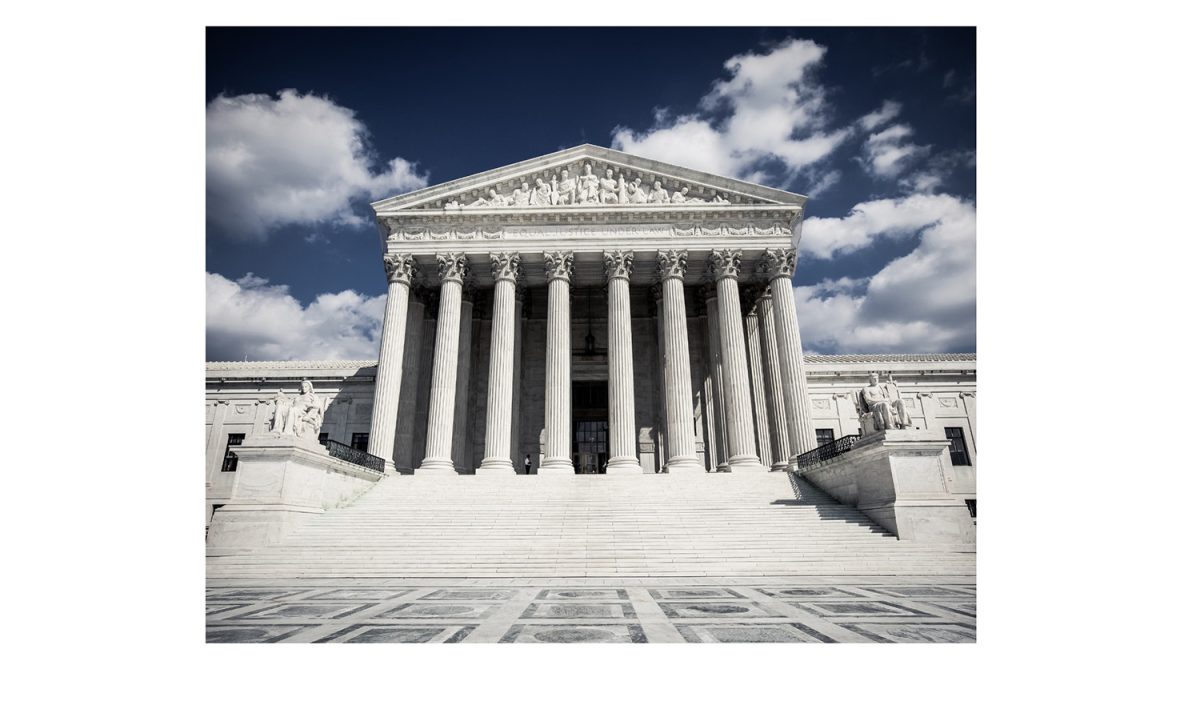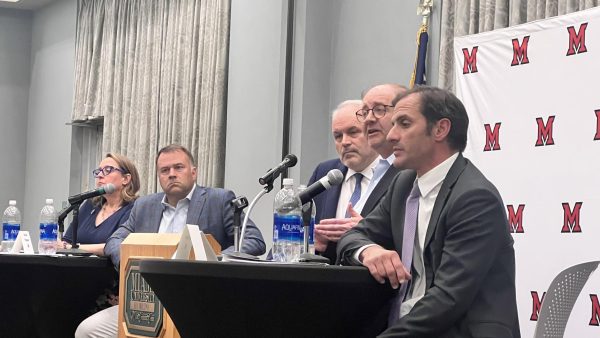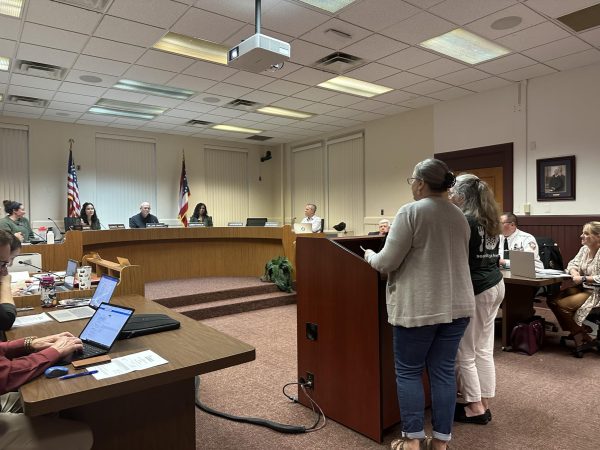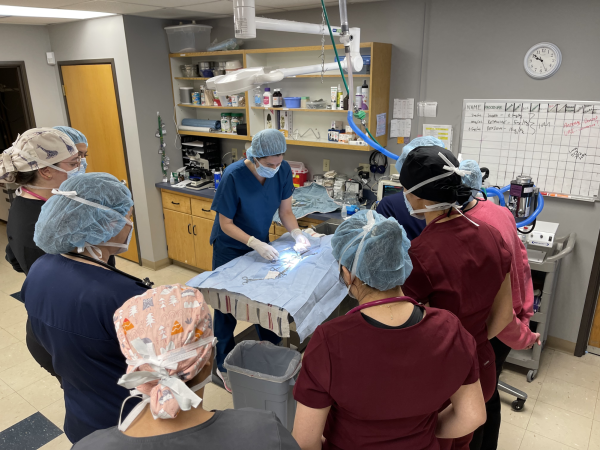Ohio leaders react to leaked Supreme Court draft ruling
A leaked draft opinion from the Supreme Court indicates the changes in abortion rules are coming.
May 13, 2022
A draft of the Supreme Court decision in the case of Dobbs v. Jackson Mississippi Health Organization was leaked that suggests the court will give the ability to pass abortions restrictions in all stages of pregnancy back to the states last week. This would severely limit access to the procedure in many states, including Ohio.
The leaked draft is not final. The final decision of the court is likely not to be released until the end of June, right as the current Supreme Court term ends.
However, the leaked draft, first published by Politico, suggests that five justices, which is a majority of the court, are poised to overturn the decisions of Roe v. Wade and Planned Parenthood v. Casey. This would give the right to legislate abortion in all stages of pregnancy back to the states.
“What’s important to know is that today, right now, abortion is legal in Ohio,” Kersha Deibel, president and CEO of Planned Parenthood Southwest Ohio (PPSWO) said in a press release after the draft was leaked. “This news (of the draft opinion) comes as no shock but is still gut wrenching to witness. There is no doubt that this opinion, if realized, will have a lasting impact around the world for generations. The fact that folks have been gathering at the steps of the Supreme Court into the late hours of the night tells us one thing: this decision does not represent the needs of the people.“
If the final ruling in this case is similar to the leaked decision, abortion will likely either be banned or severely restricted in Ohio. Currently, the closest abortion clinic to Oxford is in Cincinnati. If Ohio passed a law banning abortion, the closest would be 225 miles away in Champaign, Illinois, because most states in the Midwest would do the same as Ohio.
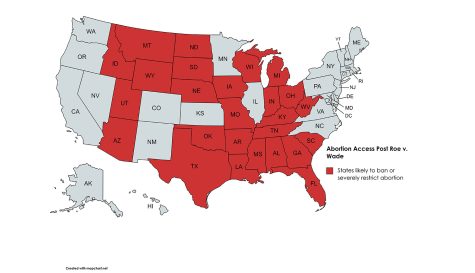
Traveling 225 miles to receive an abortion will be challenging for many. That includes Miami University students, especially those who do not have a car in Oxford. Currently, the Miami Student Health Center provides gynecology services, including contraceptives, pregnancy tests and abortion referrals.
“Even as Roe stands, there are barriers to accessing abortion and other health care services,” Medical Director of PPSWO Sharon Liner said in a press release. “Challenges like finding childcare, taking time off of work and navigating the costs of transportation and lodging associated with traveling hundreds or even thousands of miles. If Roe is overturned, it does not mean that abortions will no longer happen but the number of people dealing with these obstacles to get the essential health care they need will skyrocket, particularly in the Midwest.”
PPSWO and the Miami Health Center are unsure what referral services they will legally be able to provide if abortion is banned in Ohio. Currently, the university health center will help students through all stages of referral, including accessing transportation and finding a convenient location, according to Interim Director of Miami Health Services Machel Tipton.
According to Politico, Justices Samuel Alito, who authored the leaked opinion, Clarence Thomas, Neil Gorsuch, Brett Kavanaugh and Amy Coney Barrett are the members of the court who will likely vote to overturn precedent. Justices Stephen Breyer, Sonia Sotomayor and Elena Kagan will likely vote against. It is currently unknown how Chief Justice John Roberts will vote.
The Roe and Casey rulings
The first time the Supreme Court recognized the constitutional right to an abortion was in 1973 in the case Roe v. Wade. The court said in its decision that the Constitution had an implied right to privacy that could be discerned throughout the document.
The court said the right to have an abortion must be balanced with the government’s interests in protecting women’s health and protecting potential human life, and the weight of each of these interests varies throughout a woman’s pregnancy.
As a result, the court set up the trimester framework, in which it barred states from enacting abortion bans during the first trimester of pregnancy, which ends at 13 weeks. In the second trimester, which ends at 27 weeks, the state could impose regulations related to maternal health.
In the third trimester, a state may regulate abortions or prohibit them entirely, as long as the laws contain exceptions for cases when abortion is necessary to save the life or health of the mother. A full-term pregnancy is approximately 40 weeks.
The third trimester was chosen because at the time of the ruling, it was believed this was the point of viability. This is the point in fetal development at which, if the child were to be born at that time, it would have a good chance of living outside of the womb.
In 1992, the case of Planned Parenthood v. Casey built off this framework. The case reaffirmed the decision in Roe and a woman’s right to an abortion. It did away with the trimester framework, but kept the point of viability, which is enforced as 24 weeks. The ruling said that states cannot impose an “undue burden” on a woman seeking an abortion before that point.
“Contemporary OB/GYN” is a monthly publication that publishes new research and statistics and suggests best practices for the field of gynecology. Its goal is to create common standards in the field. According to one of its studies, the chance of survival before 22 weeks is very low, but rises after 23 weeks. A baby born at 23 weeks has an average survival rate of 13%. A baby born at 26 weeks has an average survival rate of 72%.
Since 2010, states have increasingly passed laws restricting abortion. According to the Guttmacher Institute, a research and policy organization dealing with sexual and reproductive health and rights, between Jan. 1, 2011 and July 1, 2019, 483 new abortion restrictions were enacted by the states. These restrictions account for nearly 40% of all abortion restrictions enacted by states in the decades since the Roe decision.
Dobbs v. Jackson Women’s Health Organization
In 2018, the state of Mississippi passed the “Gestational Age Act,” which prohibits all abortions, with few exceptions, after 15 weeks, which is two months before viability. One of the doctors from Jackson Women’s Health Organization, the only licensed abortion facility in Mississippi, filed a federal lawsuit.
The district court barred Mississippi from enforcing the law, because it had not provided evidence that a fetus would be viable at 15 weeks. The U.S. Court of Appeals for the Fifth Circuit affirmed that decision. Mississippi appealed to the Supreme Court in the case of Dobbs v. Jackson Women’s Health Organization.
The suit asks the court to determine if Mississippi’s law banning nearly all abortions after 15 weeks is unconstitutional. Oral arguments were heard Dec. 1, 2021.
The state of Mississippi argued that because abortion is not explicitly mentioned in the Constitution, the ability to legislate it should be left to the states. Instead of defending its 15-week ban specifically, the state argued for a complete overturning of the Roe and Casey decisions.
“Many people vocally, really just wanted to have the matter returned to them so that they could decide it locally; deal with it the way they thought best and at least have a fighting chance to have their view prevail, which was not given to them under Roe and then, as a result, under Casey,” Attorney Scott Stewart said in oral arguments.
The attorney on behalf of the Jackson Health Organization argued three points as to why Roe and Casey should not be overturned. The first is the fact that stare decisis is especially important in cases such as these, where the public is divided, and emotions run high on both sides.
Stare decisis is Latin for ‘let the decision stand.’ This is the principle that the Supreme Court looks to past decisions to help decide on future rulings. The court should not overrule itself often, so that American law is consistent and predictable. Rulings should not change until new information is presented, and no new information has been presented by Mississippi.
“Overruling unnecessarily and under pressure would lead to condemnation (by the American people), the loss of confidence in the judiciary and the ability of the Court to exercise the judicial power and to function as the Supreme Court of a nation dedicated to the rule of law,” Justice Breyer said during oral arguments. “It’s about stare decisis.”
The second argument is that Roe and Casey were correct in ruling that forcing a woman to carry out a pregnancy would be a fundamental violation of her liberty. The 14th Amendment protects an individual’s liberty from being infringed upon without the due process of law. In previous cases, the Court has interpreted liberty to include the right to make family decisions and to physical autonomy, including the right to end a pre-viability pregnancy.
The final argument for Jackson is that allowing states to pass restrictive abortion laws would push back the rights of women.
“Eliminating or reducing the right to abortion will propel women backwards. Two generations have now relied on this right, and one out of every four women makes the decision to end a pregnancy,” Julie Rikelman, the attorney on behalf of Jackson, said during oral arguments.
She said those who need an abortion after 15 weeks are often in the most vulnerable situations, such as women who have a major life change, women who have low income, are young or are pregnant for the first time.
What does this mean for Southwest Ohio?
If the leaked draft opinion resembles the final decision, which it is likely to, the court will side with the state of Mississippi and end the federally-protected right to abortion, which would allow states to legislate abortion restrictions at any stage of pregnancy.
According to the Guttmacher Institute, 26 states are likely to enact restrictions for women wishing to get an abortions, or completely ban the procedure. Ohio is one of them.
The Ohio Legislature is currently debating House Bill 598 and Senate Bill 123, which are identical and called the Human Life Protection Act. They each have a provision that would make them automatically go into effect if the Supreme Court were to ever overturn Roe and Casey. These bills were introduced in early March but are not yet passed.
These bills would make it a fourth degree felony for a physician to perform an abortion at any stage of pregnancy, unless the woman’s life or health is at risk. If that is the case, two physicians who are not professionally related must sign off on the abortion.
It has no exceptions for cases of rape or incest.
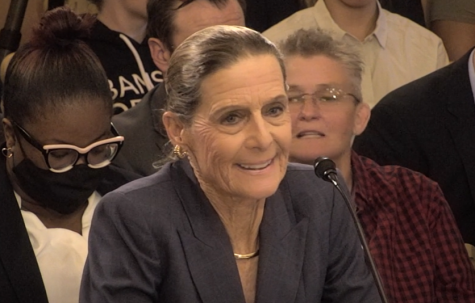
“I was a young girl when my mother marched me up to Columbus to an assembly such as this to talk about criminalizing abortion,” said State Rep. Jean Schmidt (R-Loveland), sponsor of H.B. 598, during testimony on the bill. “I can even remember the outfit that I wore. It was my foray into wanting to have the opportunity to make sure that the people in Ohio are properly represented.”
Schmidt said Ohio should pass this bill to “stand up for the rights of the unborn.” She said she believes life begins at conception and should be protected until “natural death.”
Representative Sara Carruthers (R – Hamilton) is a co-sponsor of this bill. She said it is always best to let states make decisions, because they are closer to the people than the federal government.
“I’m pro-life and always have been. I think we have so much more information than we did before,” Carruthers said. “It might have used to seem like a clump of cells, but it sure doesn’t anymore. I think times have changed, and people forget that. The younger generation doesn’t realize that.”
She said she thinks contraceptives are more widely available and accepted than they used to be, and the state should not interfere with that. Because women have the ability to prevent pregnancy, she does not think they should be able to end them. In instances of rape, she said women can use the morning-after pill. She said people now do not take responsibility for their actions as they should.
According to the Guttmacher Institute, 88% of women ages 18 to 49 who are sexually active and do not wish to become pregnant regularly use contraceptives. This varies only slightly according to income level. Women ages 18-24 are least likely to be using a regular form of contraception.
Currently, the three closest abortion clinics to Oxford are in Cincinnati, Dayton and Indianapolis. If this law were to be passed and the Supreme Court ruled to overturn Roe v. Wade, the closest would be in Champaign, Illinois.
Julie Uhal, the SAFE Expansion Coordinator with Planned Parenthood of Illinois (PPI), said that Illinois will become a “haven” for women’s access to abortion. SAFE stands for securing access for everyone. She said PPI has been preparing for this situation for years. It has upgraded some of its facilities and expanded its telehealth options.
“These abortion restrictions and bans don’t stop people from needing and receiving abortions,” Uhal said. “These bans disproportionately hurt the people who are already disproportionately negatively impacted by our healthcare system.”
After Texas banned abortions after six weeks in September 2021, PPI saw a 30% increase in out-of-state patients. Uhal said if Roe is overturned, PPI is expecting up to five times its usual patients. Planned Parenthood does not release data on the number of abortions performed.
Until the final opinion of the court comes out, it is unclear what all the impacts will be on citizens across the country. HB 598 and SB 123 are both still in committee, so they could also change.


